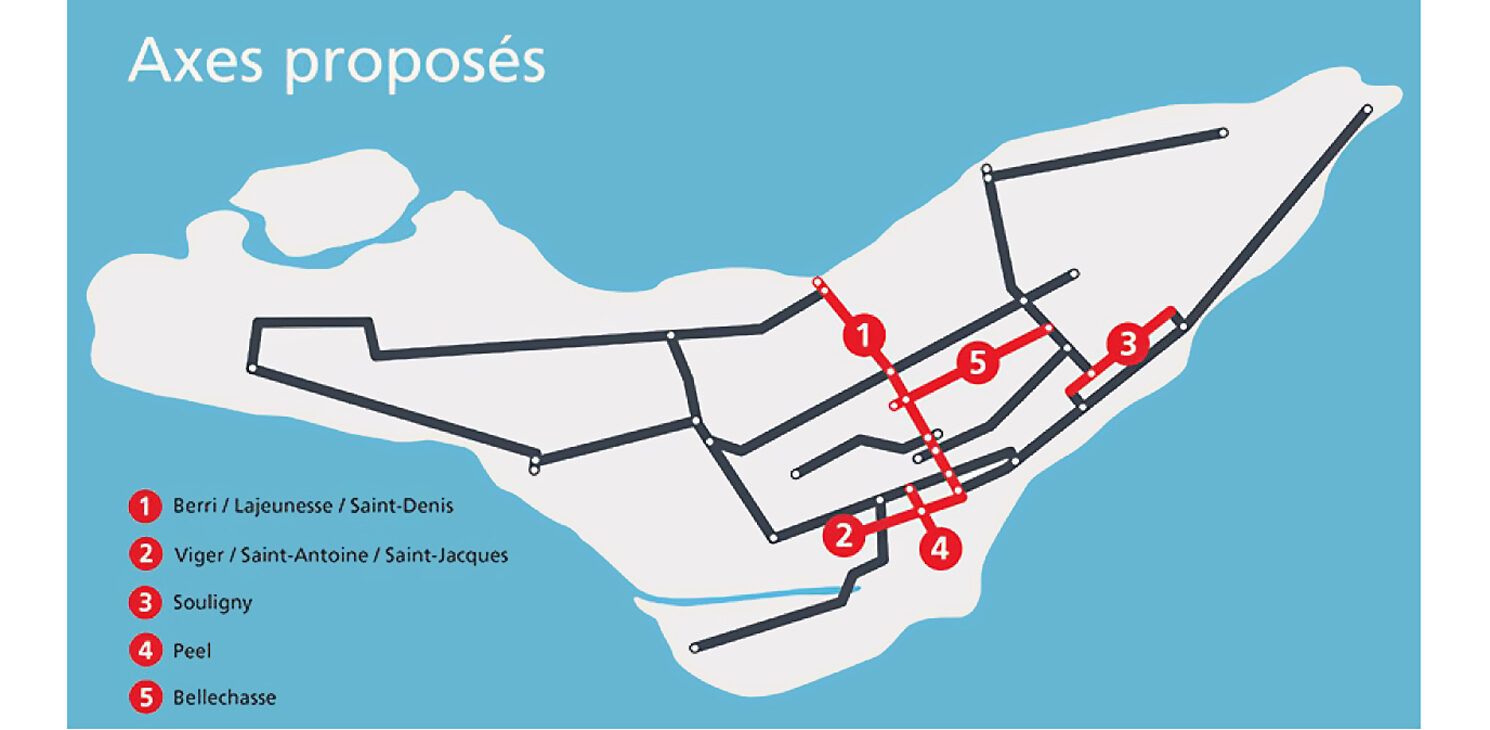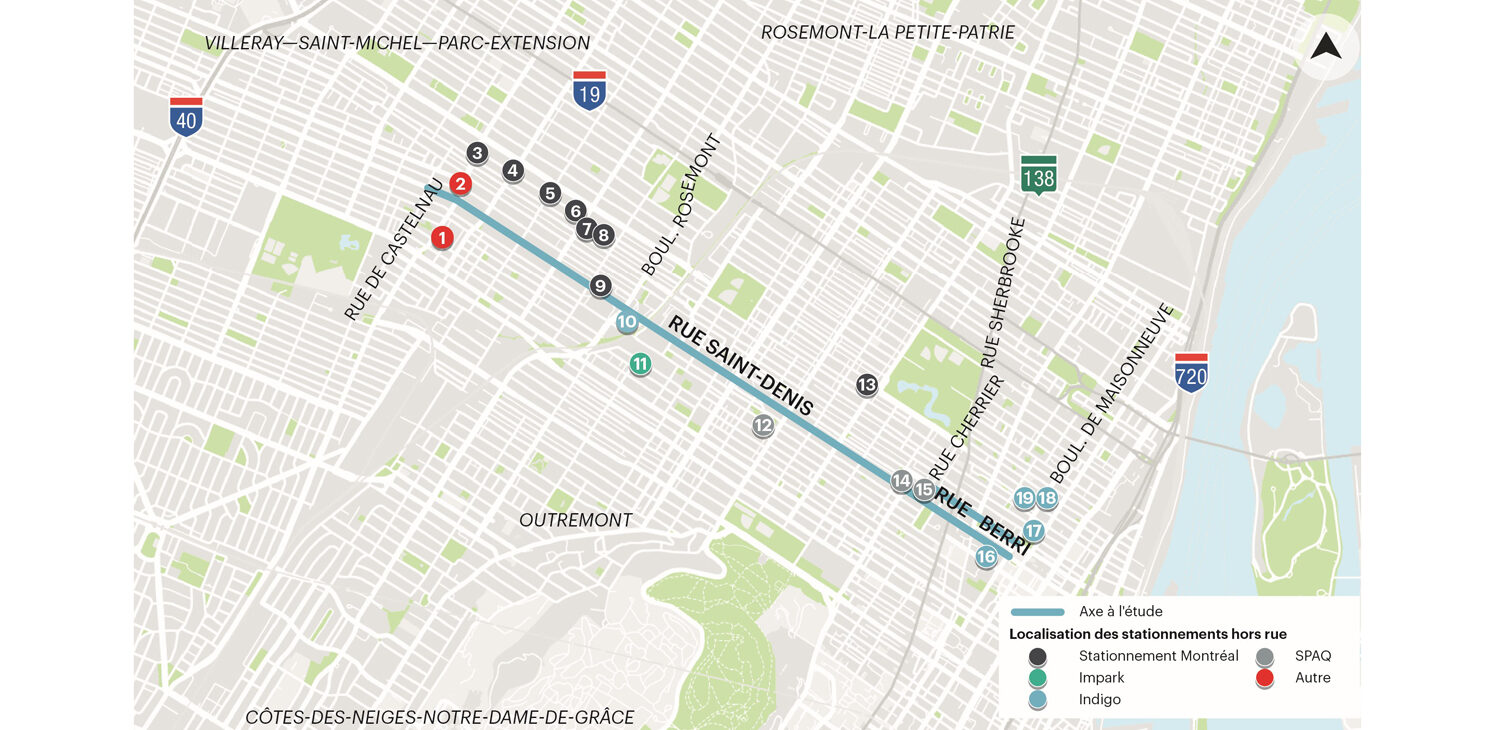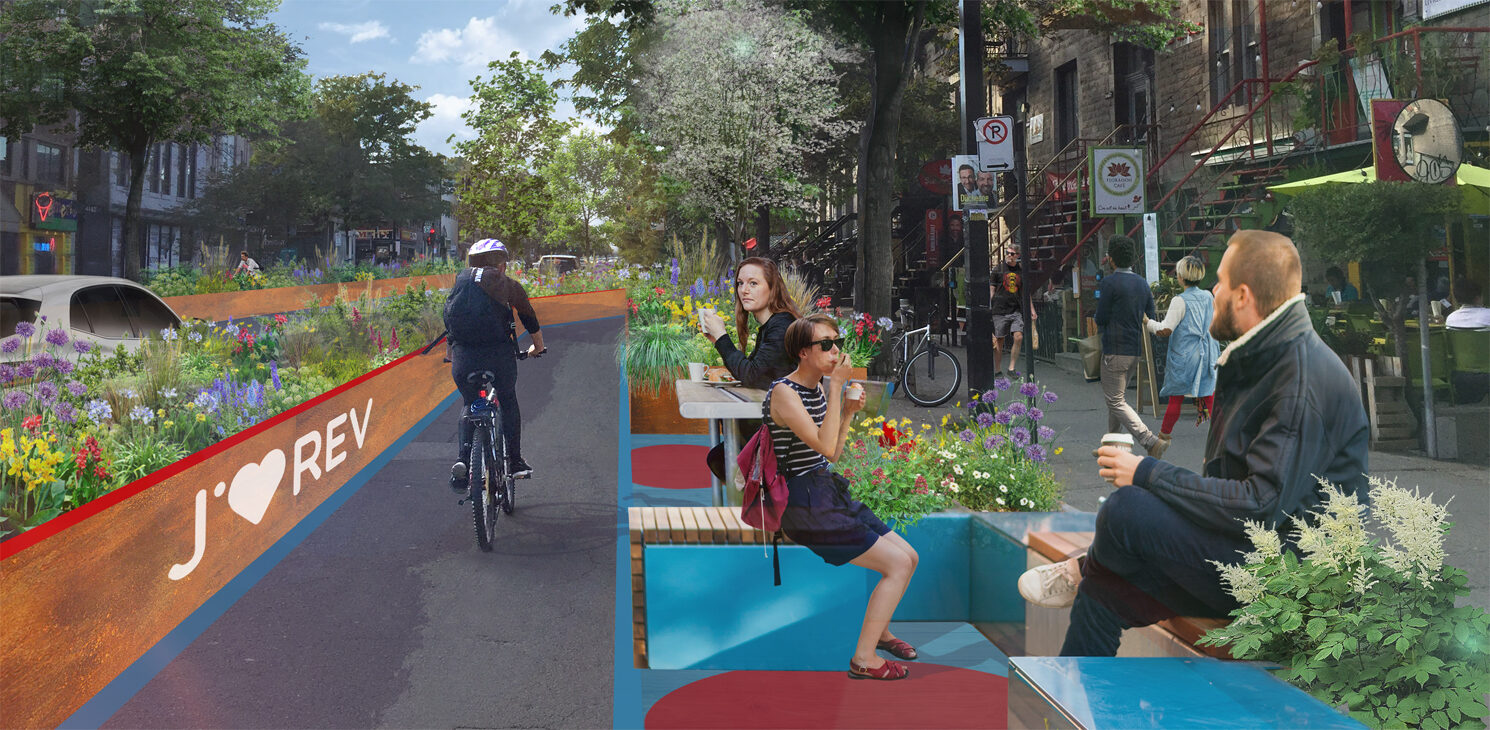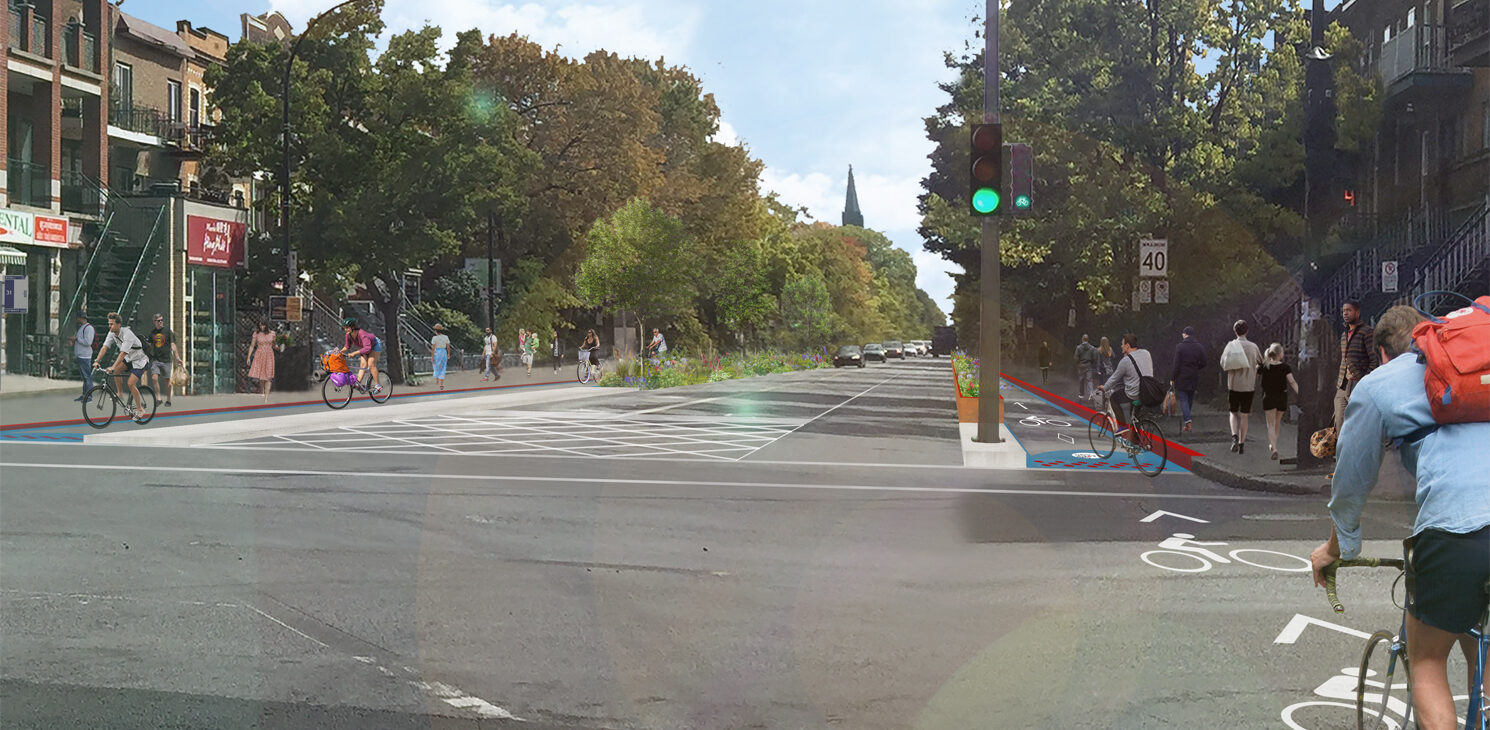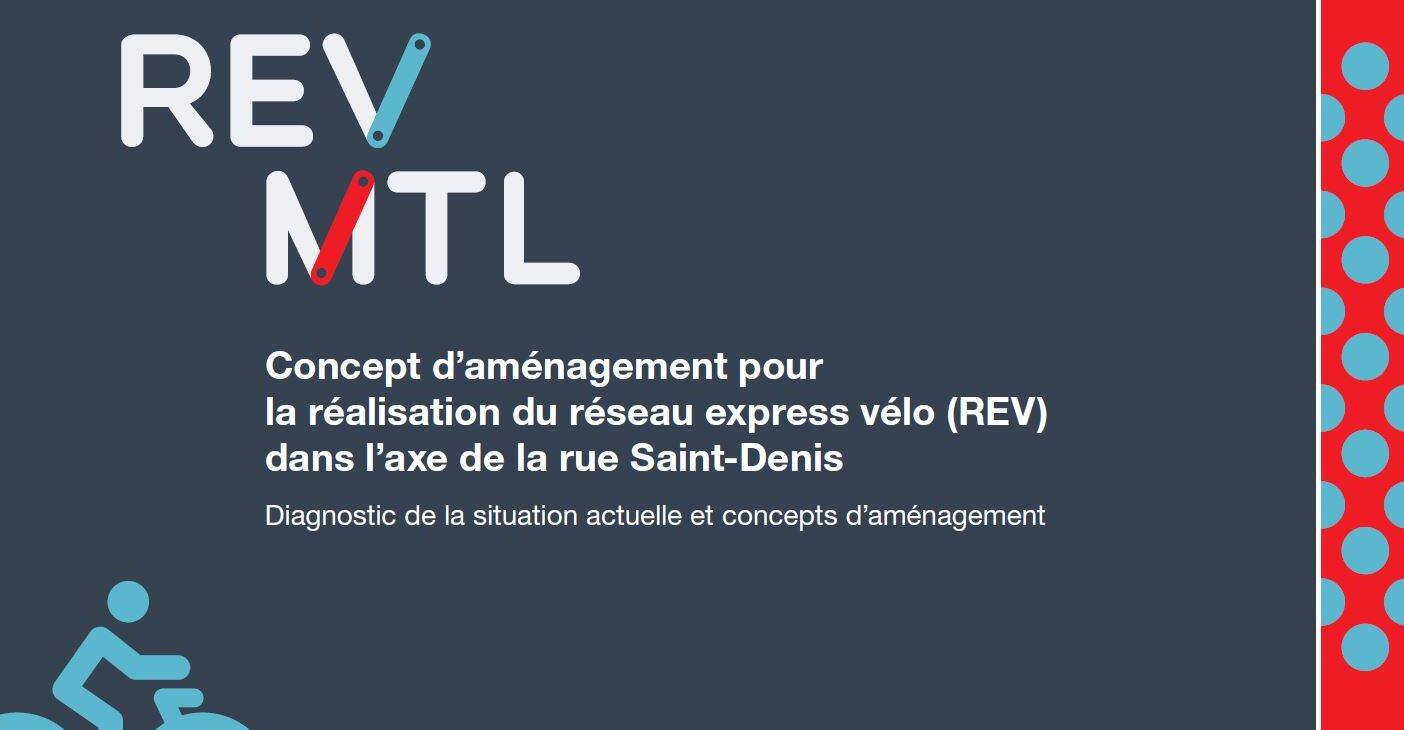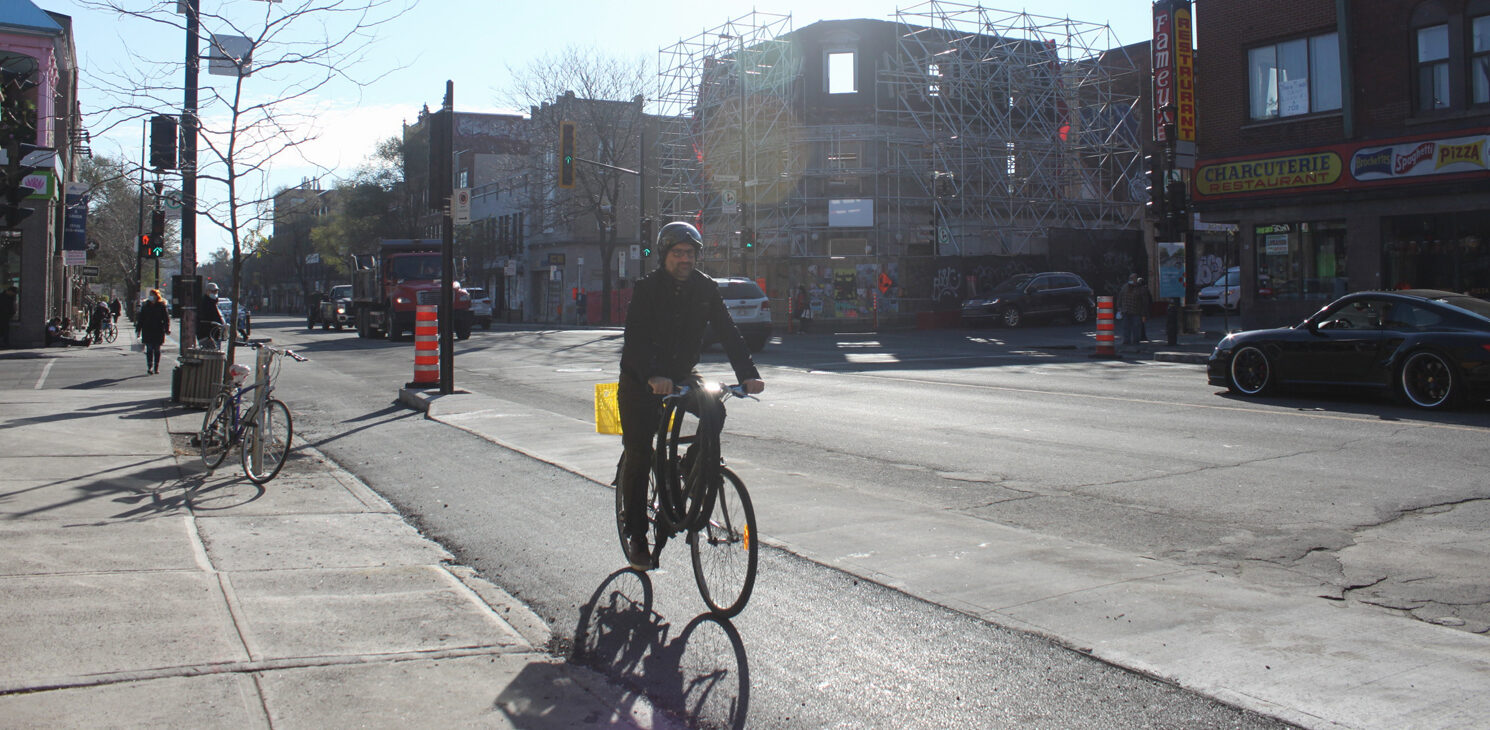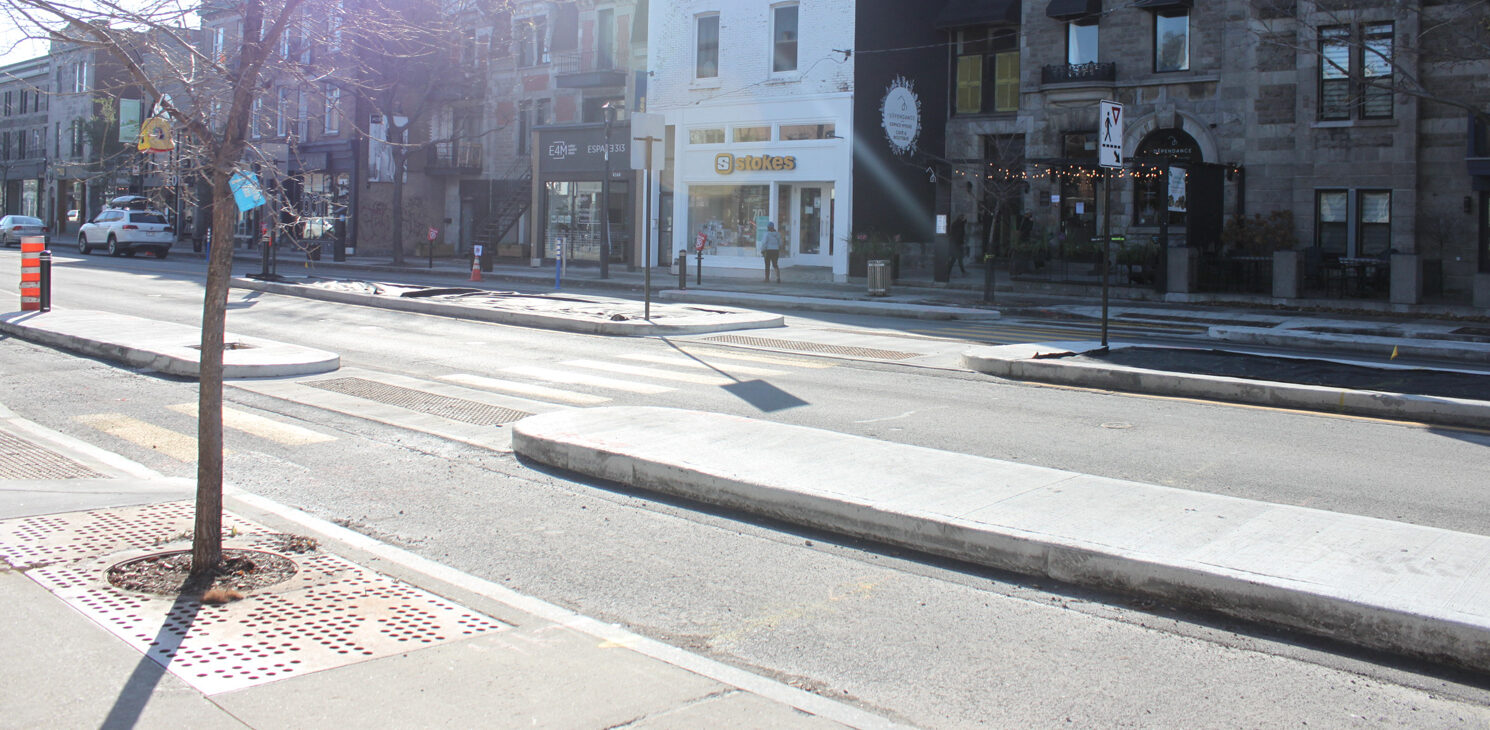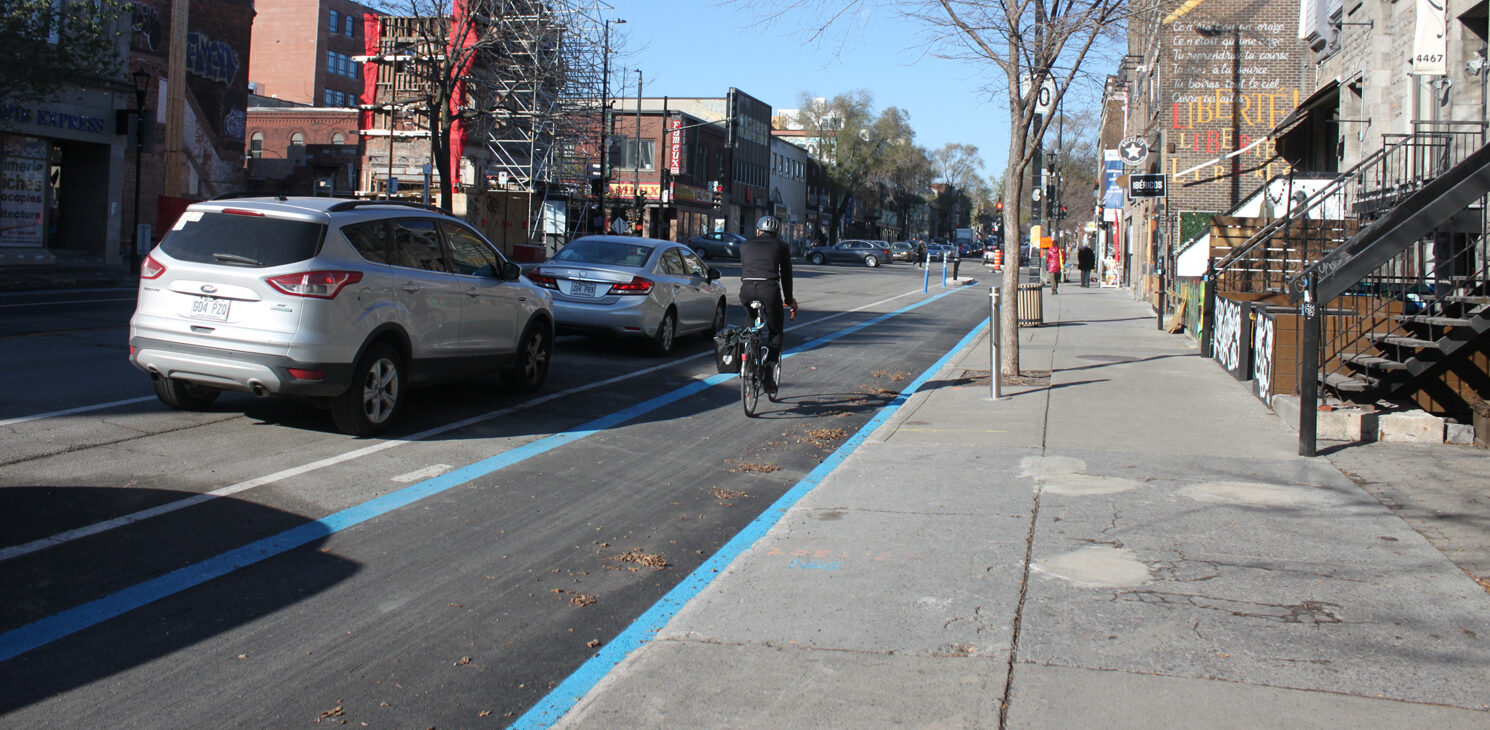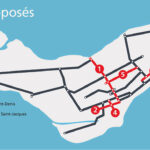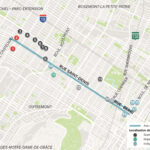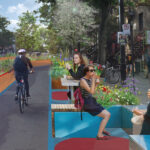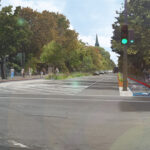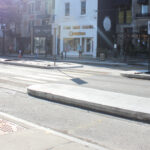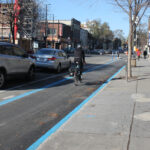In 2019, Ville de Montréal announced its intention to implement an Express Bicycle Network (EBN) that would be open throughout the year and serve as a base for the Montréal bicycle network while allowing for integration of the various local bicycle networks. This 184-km bicycle path project will span the entire territory of the Island of Montréal and include 17 routes that are open year-round in order to meet the City’s goal of bicycle travel accounting for 15% of trips by 2027.
Enhancing the active mobility offer within the territory of Montréal through the implementation of the EBN is framed by 11 guiding principles, and is in keeping with the three street development objectives established by the Direction de la mobilité (Mobility Directorate) – attractiveness, efficiency and safety – along with the “Vision Zero” policy.
CIMA+ was tasked with creating development designs that best meet the needs of users, taking into account the constraints of the two routes under study. In addition, the importance of the Saint-Denis route, primarily due to its connection to downtown, meant that particular attention had to be paid to its revitalization, especially within the commercial sector (Plateau-Mont-Royal Borough and the Quartier Latin).
The CIMA+ team conducted a comprehensive diagnosis of the two routes under study with respect to active transportation, public transit, the vehicle network and parking areas, and combined its analysis with the Vlan Paysages study pertaining to urban design and landscaping opportunities along the route.
In the end, the selected design represents the ideal option for balancing the objectives of the EBN with the challenges related to implementation. Efficiency and user safety remain the top priorities in the proposed design, which also takes into consideration traffic, parking and revegetation requirements along the route.
The development project involving the two EBN routes under study is in keeping with sustainable development principles. The City wanted to provide Montréal residents with an efficient, safe, user-friendly and competitive alternative to single-occupancy vehicle use. The selected plan also helps to improve the quality of life for citizens by facilitating access to downtown and other sites of interest, revitalizing commercial arteries and community life, and increasing customer traffic for retailers.
By the numbers, the Saint-Denis route represents an average of 5,700 trips per day, and the construction resulted in the redistribution of 39% of the space previously reserved for vehicles to active modes of transportation and vegetation (increasing from 30% to 69% of street space, included 15% reserved exclusively for cyclists).
